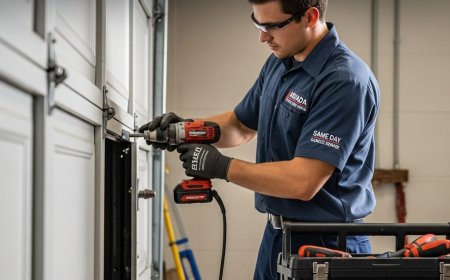How to Improve Construction Site Safety with Horizontal Lifeline?
The safety of workers on construction sites is the main priority, especially when working at heights. One way to effectively guard against falls is with the use of the horizontal lifeline. It provides an anchor point for workers to move around without much risk of falling.
The construction site safety improved with the knowledge that becomes vital for complying with OSHA fall protection regulations and safe working practices.
The Importance of Horizontal Lifeline
Horizontal lifeline systems are flexible fall protection mechanisms applied between two anchor points. This permits workers to pass along the lifeline while being secured to it by means of a full-body harness.
According to the OSHA fall protection standard, horizontal lifelines are to be designed, installed, and used under the supervision of a qualified person to ensure safety and appropriateness to the given work environment.
Why Are Such Safety Features Becoming Essential?
It is essential to improve construction site safety effectively by assessing the situation in the workplace to recognize and identify fall hazards. After those have been identified, a horizontal lifeline could be configured along those hazards with a maximum safety consideration for workers.
For example, if workers perform any work on the roof or an elevated platform, the lifeline must be properly secured to withstand forces generated by a fall. A horizontal lifeline must be correctly installed, with good tensioning and in a position such that a fall from that elevation would not put a worker at risk.
Training Required for Such Operations
OSHA fall protection guidelines state that training of workers on the proper use of fall protection systems is imperative. Workers should be educated about connecting their harnesses to the lifeline. Regular safety meetings help reinforce this knowledge and keep safety at the forefront of daily work life.
Another vital aspect for an improvised safety measure of a horizontal lifeline is inspection and maintenance. All fall protection systems, as per OSHA, are required to be inspected prior to putting them into use. The lifeline, anchors, and harnesses are to be checked for soundness and any clearly visible signs of wear or damage addressed immediately. This will guarantee that the system stays operable for a long time.
In addition, consideration must be given to the various specifications laid down by OSHA in respect of horizontal lifelines. These include maximum allowable fall distance, strength of anchors per system, and overall system design. Therefore, compliance with these regulations will help to shield the workers and the employer from the possibility of fines.
Conclusion
It can thus be stated that the improvisation of construction site safety by horizontal lifelines depends on thorough planning and installation, detailed training, and consistent maintenance.
By applying the OSHA fall protection guidelines and providing every worker with the information and tools they need, one can turn construction sites into far safer sites. An installation of a horizontal lifeline system is a proactive way to minimize risks and create a safety culture on the job site.



































